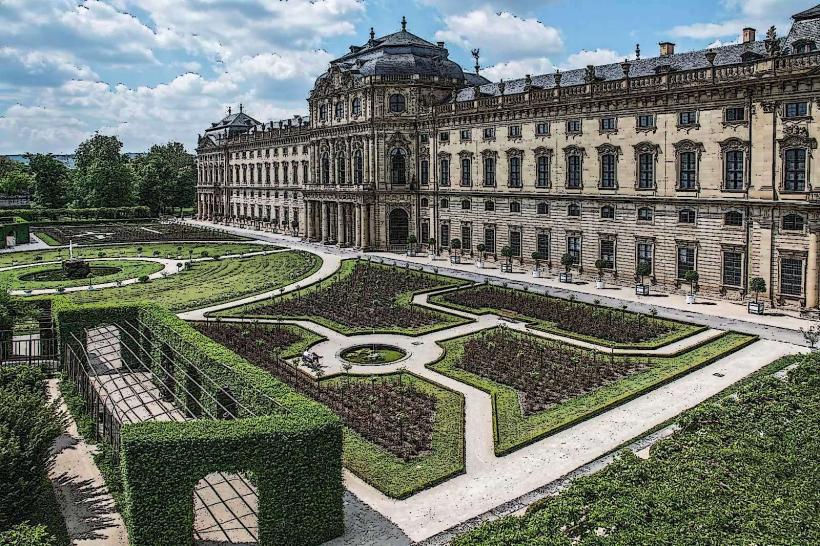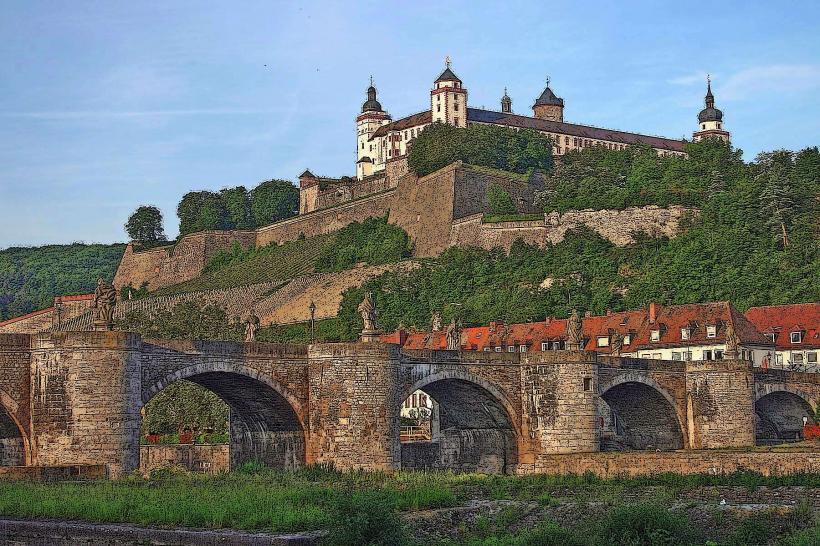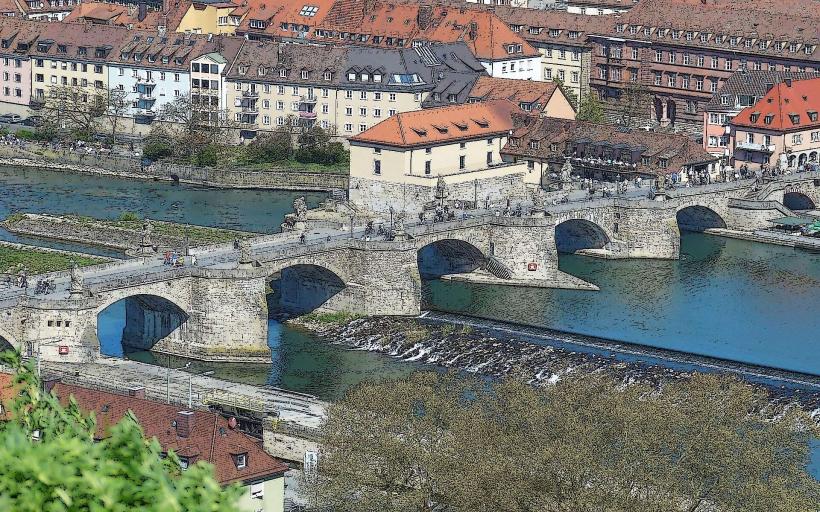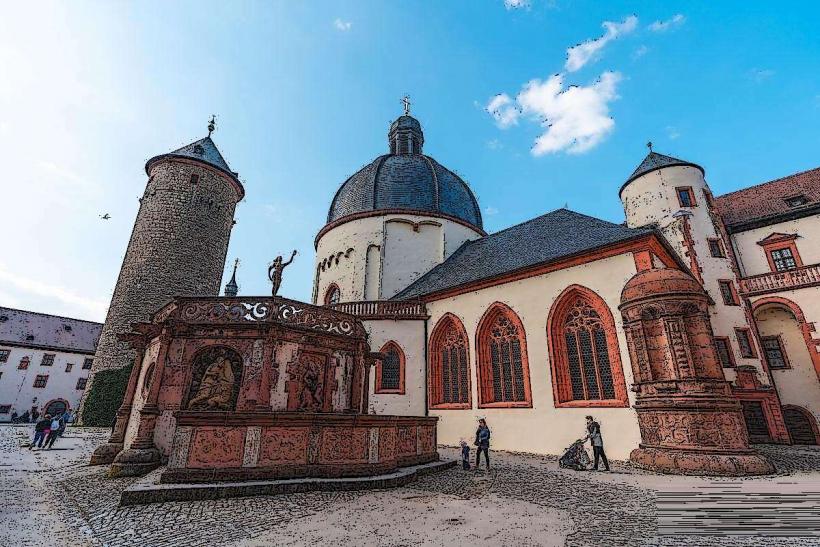Information
Landmark: Saint Kilian CathedralCity: Wurzburg
Country: Germany
Continent: Europe
St. Kilian Cathedral (known locally as Kiliansdom or Würzburger Dom) is a Roman Catholic cathedral located in the heart of Würzburg, Germany. It is one of the most important landmarks in the city and a prime example of Romanesque architecture with some Gothic and Baroque elements. The cathedral is dedicated to St. Kilian, the patron saint of Würzburg, and serves as the seat of the Bishop of Würzburg.
Key Facts and Features of St. Kilian Cathedral
Historical Background
- St. Kilian Cathedral was originally built in the 8th century by Saint Boniface (the missionary who brought Christianity to the Germans) and was dedicated to St. Kilian, who is believed to have evangelized the region and was martyred in the 7th century.
- The current cathedral structure was begun in 1040 and completed by 1237 during the reign of the Prince-Bishops of Würzburg. Over time, it has been expanded and renovated, with significant changes made in the 16th century and 17th century.
- The cathedral was severely damaged during World War II, particularly in 1945, but was meticulously restored and reopened in the 1950s.
Architectural Style
- St. Kilian Cathedral is primarily built in the Romanesque style, which was common in medieval Europe. The cathedral’s long nave, thick stone walls, and rounded arches are classic characteristics of Romanesque architecture.
- The cathedral also features Gothic elements, such as pointed arches and tall windows, particularly in its eastern part where the choir and the apse are located.
- The Baroque-style addition of two towers at the western end of the cathedral was completed in the 18th century. These towers, with their onion domes, are a distinctive feature of the cathedral’s skyline.
Interior Design
- The interior of St. Kilian Cathedral is equally impressive, with its spacious nave, high vaulted ceilings, and exquisite stained glass windows that date back to the Middle Ages and were restored after the war.
- One of the most notable features is the high altar, which is a magnificent example of Baroque art. The altar, created by Balthasar Neumann, a prominent architect of the time, is richly decorated with gold leaf, marble, and intricate carvings.
- The choir area is also notable for its Baroque furnishings, and the cathedral’s crypt is home to the tombs of Prince-Bishops who ruled the region in centuries past.
- The cathedral's side chapels contain many works of religious art, including sculptures, paintings, and altarpieces.
The Towers
- The cathedral features two towers that rise above the city. These towers were designed in the Baroque style and stand at a height of approximately 80 meters (262 feet), making them a defining feature of the Würzburg skyline.
- The towers are topped with distinctive onion domes, which are a classic feature of Baroque church architecture in Germany.
Stained Glass Windows
- The stained glass windows in St. Kilian Cathedral are of particular historical and artistic value. Many of these windows were created in the medieval period and feature vivid biblical scenes.
- The rose window above the main entrance is an example of Gothic-style stained glass, with intricate patterns and depictions of religious figures.
- Other windows were created in the 20th century following the damage from World War II, and their designs reflect modern interpretations of biblical themes.
Bishop's Tomb
- The cathedral is the final resting place of several Prince-Bishops of Würzburg. In the crypt, you can find the tombs of notable bishops, including Bishop Johann Gottfried von Guttenberg and Bishop Friedrich Karl von Schreiber.
- The tomb of Saint Kilian is located in the choir, where the saint’s relics are kept in a silver shrine. Pilgrims come to honor him, as he is one of the most important saints in the region.
Restoration After World War II
- During World War II, Würzburg suffered extensive bombing, and St. Kilian Cathedral was heavily damaged in March 1945. The roof was destroyed, and much of the interior was gutted by fire. However, after the war, the cathedral was meticulously restored to its former glory.
- The restoration efforts included recreating the stained glass windows and repairing the stonework. Much of the artwork was preserved, while new elements were added to complement the cathedral’s historical significance.
The Cathedral’s Role
- St. Kilian Cathedral is the seat of the Bishop of Würzburg and remains an active place of worship. It hosts regular Mass services, special liturgical events, and the annual St. Kilian Feast, which celebrates the city’s patron saint and attracts visitors and pilgrims.
- The cathedral is also a focal point for the Roman Catholic community in the Würzburg diocese, one of the oldest dioceses in Germany.
Visitor Experience
- Visitors to St. Kilian Cathedral can explore its stunning interior, including the high altar, choir, and crypt. The cathedral offers a peaceful and reflective atmosphere for those wishing to learn about its history or simply appreciate its architectural beauty.
- The cathedral is free to visit, but guided tours are available for those interested in a deeper understanding of its history and significance.
- Visitors can also enjoy the view of the city from the cathedral’s towers, which offer panoramic vistas of Würzburg, the Main River, and the surrounding vineyards.
Conclusion
St. Kilian Cathedral is a remarkable symbol of Würzburg's spiritual, cultural, and architectural heritage. With its combination of Romanesque, Gothic, and Baroque elements, the cathedral stands as a testament to the city’s long and storied history. Whether you are drawn by its artistic beauty, religious significance, or architectural grandeur, St. Kilian Cathedral is a must-see destination for anyone visiting Würzburg.





